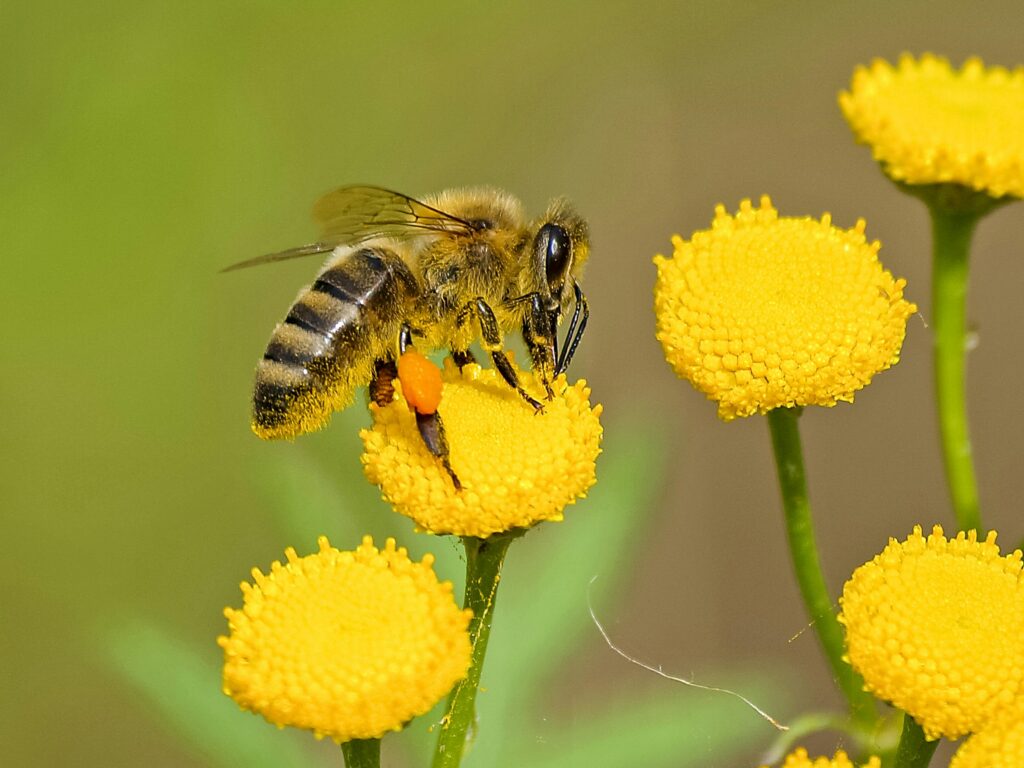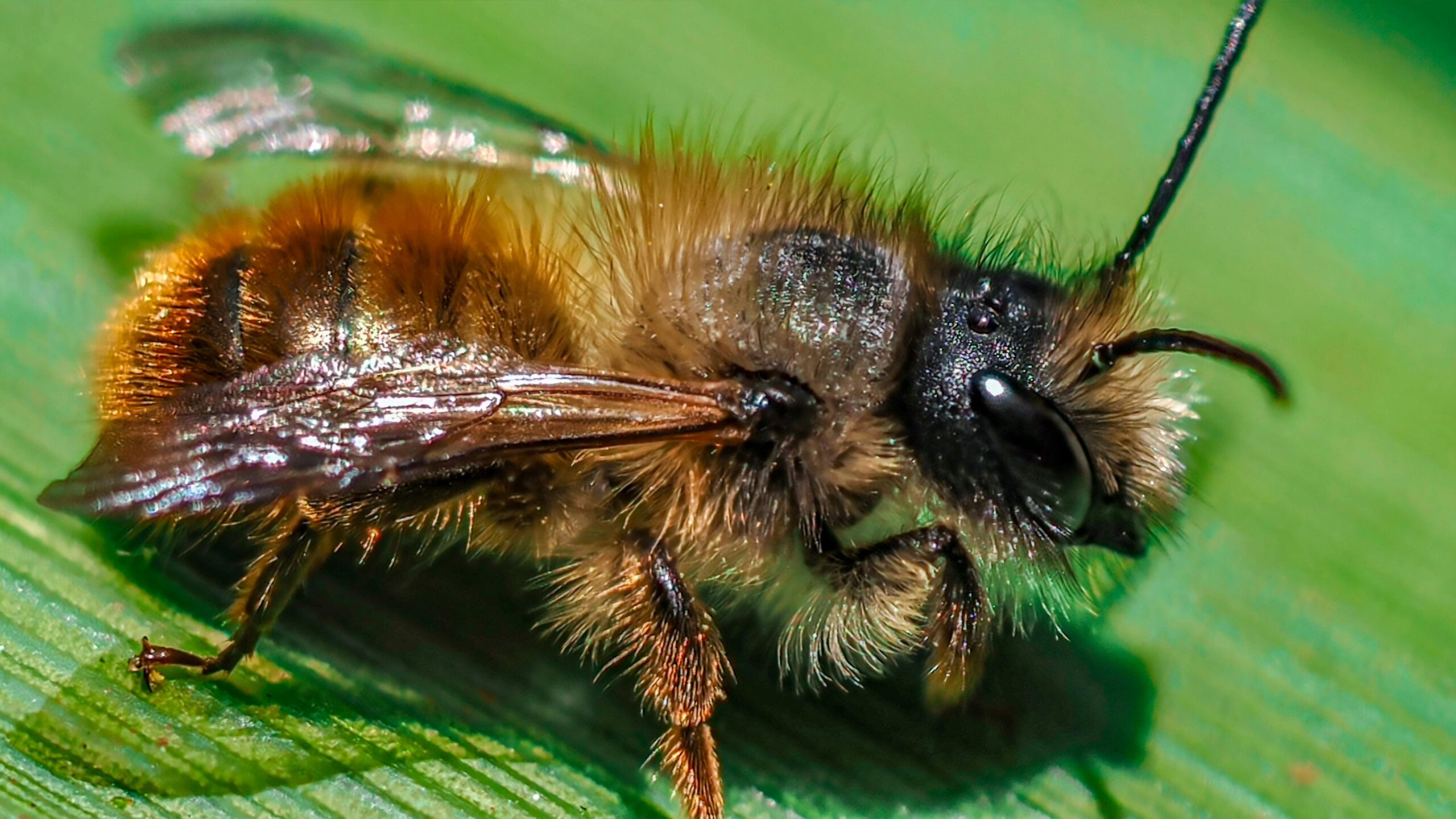It happens a lot in the summer months. We’re called out to deal with wasps, only to find that the wasps are bees. If you ask anyone to draw a bee, they will probably draw the fuzzy buzzy bumble-bee – ask them to draw a wasp, and they’ll draw a slimmer, sleeker insect, both of them clearly banded in black and yellow. These are the bee and wasp species that have drawn their attention over the years, but they are not the only ones. There are 267 different bee species in the UK, and only 25 of those are bumble bees. The rest – well, you could easily mistake them for wasps.

Let’s start with the honey bee – Apis mellifera. You’d probably see these landing on flowers in their search for pollen or nectar, though you might be brave enough to approach a swarm. This is the term used when a group of honey bees leave their hive to found a new colony; they gather in a large cluster near their original hive at first, then follow scout bees to places where they might be able to live. They don’t have a hive to protect, so they aren’t aggressive unless you really upset them. Take a good look; they’re about 12mm to 18mm long and mainly black. You might see yellow banding or a grey tinge or hints of reddish-brown on their bodies, depending on the sub-species. Bee-keepers can buy a ‘starter pack’ of bees that are sent through the post, meaning that the honeybee in your garden may have had ancestors from Italy, Greece, Asia, Macedonia or many other places, each with their own distinctive colour patterns.

Then there are solitary bees – the species that don’t live in large colonies as honeybees and bumblebees do. I’ll begin with the most common type in the UK – the mining bee. These are flying insects of 5mm to 17mm in length with a body that may be black with yellow bands or red tips, or bright red to ashy grey all over, depending on the species. They live in holes in the ground, either taking on an abandoned cavity or excavating their own tunnels and leaving small ‘volcanoes’ of soil around the tiny entrance.
Before I finish, I must mention another solitary bee – the mason bee. This insect is similar to a wasp in size, with its markings varying from grey-banded black with a furry yellow underside (orange-vented mason bee) to a fuzzy ginger all over (red mason bee). These are excellent pollinators – much more efficient than honey bees – as they don’t have a hive demanding constant supplies of pollen. They carry their pollen around on their legs and drop a large proportion of it… which pollinates the plant they happen to be standing on at the time.
Don’t be surprised if you call us out to deal with wasps and we tell you that they are bees. It’s an easy mistake to make. They’re fascinating creatures and they won’t harm you. Just enjoy the sight of them.

